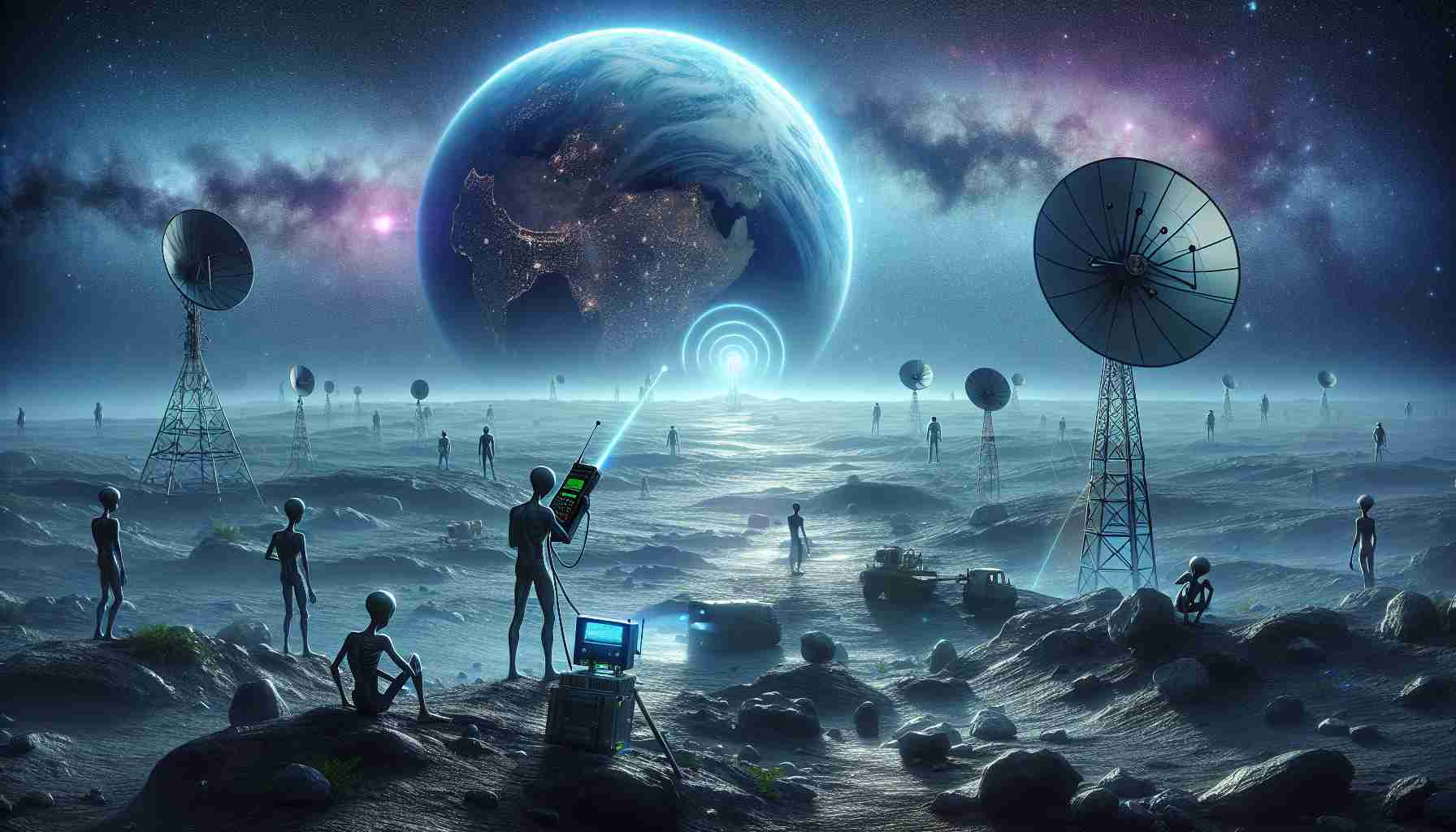- SETI Institute research suggests alien civilizations could detect Earth if they have technology similar to ours.
- “Technosignatures,” such as radio transmissions and atmospheric pollution, are key indicators of technological life.
- Earth’s radio waves are detectable across vast distances, up to 12,000 light-years away.
- Atmospheric pollutants like nitrogen dioxide can be spotted from 5.7 light-years away with telescopes comparable to the James Webb Space Telescope.
- Urban lights and satellite orbits could be visible to advanced alien telescopes, marking Earth as a technologically active planet.
- Understanding our own technosignatures enhances human efforts in the search for extraterrestrial life.
- The search for intelligent life energizes our curiosity and efforts to determine if humanity is alone in the universe.
Imagine a distant alien civilization watching Earth, trying to determine if life exists. Could they spot us from afar using their alien technology? According to groundbreaking research from the SETI Institute, if these extraterrestrial neighbors have tech similar to ours, the answer is a fascinating “yes.”
SETI researchers, led by Sofia Sheikh, delve into the dazzling potential of “technosignatures” — the telltale signs of technological advancement. Of these, our radio transmissions, especially those booming from planetary radar systems, shine the brightest. Remarkably, Earth’s powerful radio waves can ripple across space, detectable from up to 12,000 light-years away. Imagine an alien world, keen-eyed and equipped with similar technology, recognizing our blue planet as a hub of technological marvel.
Even more intriguing, bustling industries leave a mark — pollution. Atmospheric pollutants, especially nitrogen dioxide, become visible to alien eyes within 5.7 light-years if they’re equipped with telescopes on par with the James Webb Space Telescope. These pollutants paint Earth as an industrious planet filled with life.
Drawing nearer, cityscapes shimmer like constellations, their urban glow and heat signatures unmistakable. Advanced telescopes from other worlds might even outline our satellites dancing around us in their orbital waltz. These signals make Earth a beacon, a cosmic postcard to the vast universe.
Our technosignatures not only reveal us but guide our quest to identify alien life. By understanding which signals scream “intelligent life” the loudest, humans enhance their cosmic search strategies. With every insight, we edge closer to answering the ultimate question: Are we alone in the universe? With eyes to the sky and evidence at hand, the hunt for extraterrestrial intelligence continues, energizing our hopes and curiosity.
Unveiling Earth’s Footprint: How Aliens Might Already Know We Exist!
The Technological Signals of Earth
The idea that distant alien civilizations could detect traces of life on Earth has moved from science fiction to scientific inquiry. With ongoing advancements in the search for extraterrestrial intelligence (SETI), the possibility of aliens spotting us through “technosignatures” is growing. Research indicates that our planet broadcasts many signals into the cosmos that an advanced extraterrestrial civilization might interpret as evidence of intelligent life.
How Could Aliens Detect Us?
1. Radio Waves: Earth emits countless radio waves—especially from radar systems—that could be detected from as far as 12,000 light-years away. These waves are among the strongest indicators of life due to their broad reach across space.
2. Pollution Signatures: Atmospheric pollutants, such as nitrogen dioxide, serve as a sign of industrial activity and can be spotted within 5.7 light-years with technology akin to the James Webb Space Telescope.
3. Urban Light and Heat Emissions: City lights and heat signatures provided by bustling human activity may make our urban areas appear like constellations to alien telescopes.
4. Satellite Presence: The orbiting satellites around Earth create unique patterns that technologically savvy extraterrestrials might see as indicators of life.
Pros and Cons of Detectability
# Pros:
– Mutual Awareness: Detecting and being detected by other civilizations could open the possibility for communication and mutual learning.
– Technological Advancement: Understanding how our signals travel could enhance our own SETI strategies.
# Cons:
– Privacy Concerns: Being detectable carries the risk of exposing our civilization to unknown entities, potentially leading to security concerns.
– Misinterpretation: There is a possibility that technosignatures can be misinterpreted, leading to false assumptions about our civilization’s nature or intentions.
Technological Projections and Innovations
As research progresses, we need to innovate in both detecting technosignatures and understanding their implications. Tools like the James Webb Space Telescope play a crucial role in observing distant planets, while on Earth, advancements are being made to refine how we search for extraterrestrial technosignatures.
The Future of SETI and Earth’s Technosignatures
The interest in understanding Earth’s cosmic “footprint” is set to grow. Predictive models suggest that technosignature detection methods will become more sensitive and comprehensive, possibly enabling us to find other civilizations within the next few decades.
For additional insights into the search for extraterrestrial life and the current progress in the field, explore SETI Institute.
Conclusion:
The exploration of technosignatures not only sheds light on how alien civilizations might detect us but also enhances our pursuit of finding them. By refining detection strategies and understanding what broadcasts life into the cosmos, we edge closer to answering the eternal question of whether we are alone in the universe. As technology evolves, so does the thrilling chase for interstellar communication and discovery.




















